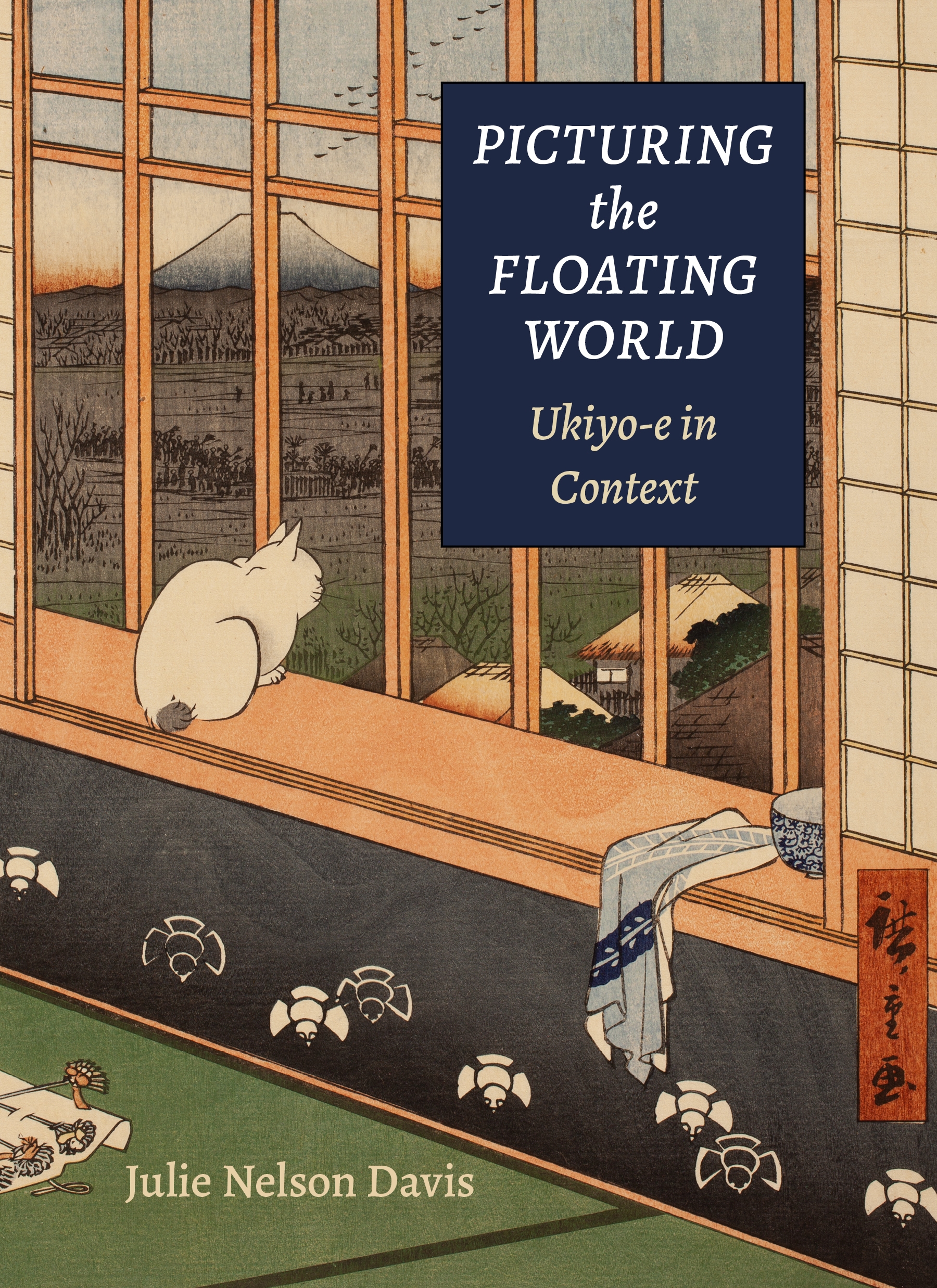Picturing the Floating World: Ukiyo-e in Context
Awards
- Winner of the Choice Magazine Outstanding Academic Title, 2022
- About the Book
-
Today we think of ukiyo-e—“the pictures of the floating world”—as masterpieces of Japanese art, highly prized throughout the world. Yet it is often said that ukiyo-e were little appreciated in their own time and were even used as packing material for ceramics. In Picturing the Floating World, Julie Nelson Davis debunks this myth and demonstrates that ukiyo-e was thoroughly appreciated as a field of artistic production, worthy of connoisseurship and canonization by its contemporaries. Putting these images back into their dynamic context, she shows how consumers, critics, and makers produced and sold, appraised and collected, and described and recorded ukiyo-e. She recovers this multilayered world of pictures in which some were made for a commercial market, backed by savvy entrepreneurs looking for new ways to make a profit, while others were produced for private coteries and high-ranking connoisseurs seeking to enrich their cultural capital.
The book opens with an analysis of period documents to establish the terms of appraisal brought to ukiyo-e in late eighteenth-century Japan, mapping the evolution of the genre from a century earlier and the development of its typologies and the creation of a canon of makers—both of which have defined the field ever since. Organized around divisions of major technological and aesthetic developments, the book reveals how artistic practice and commercial enterprise were intertwined throughout ukiyo-e’s history, from its earliest imagery through the twentieth century. The depiction of particular subjects in and for the floating world of urban Edo and the process of negotiating this within the larger field of publishing are examined to further ground ukiyo-e as material culture, as commodities in a mercantile economy.
Picturing the Floating World offers a new approach: a critical yet accessible analysis of the genre as it was developed in its social, cultural, and political milieu. The book introduces students, collectors, and enthusiasts to ukiyo-e as a genre under construction in its own time while contributing to our understanding of early modern visual production.
- About the Author(s)
-
Julie Nelson Davis, Author
Julie Nelson Davis is professor of the history of art at the University of Pennsylvania.
- Reviews and Endorsements
-
- Picturing the Floating World is at once accessible, critical, and informative. It builds both on the latest scholarship in the field and on period writings and in so doing offers a fresh, authoritative take on the subject. There are many general books on ukiyo-e, but the coverage, organization, length, and choice of illustrations make this an excellent historical introduction for students and print enthusiasts alike.
—Christine M. E. Guth, author, Hokusai’s Great Wave: Biography of a Global Icon - In recent years, much scholarship has focused on understanding the mechanics of ukiyo-e production and sales, and Julie Davis skillfully incorporates these ‘discoveries’ in her work to provide fuller contexts for the prints and print studios. Her book also includes the latest conclusions of Japanese, European, and American scholars and a useful bibliography, making it a valuable textbook for students and resource for anyone interested in Japanese prints.
—Bruce Coats, Scripps College - In demonstrating the importance of the ukiyo-e, Davis takes into consideration the significance of printed books and paintings and their roles in the "floating world." Most works Davis discusses were made during the Tokugawa period (1603–1868). Another major focus is the city of Edo, which experienced an explosive rise as a mercantile hub and soon became the epicenter for printmaking. The book closes with an epilogue, "Evoking the Floating World,” that carries the print genre into the Meiji restoration of 1868. Including scholarly notes and a valuable bibliography, this book will delight anyone interested in Japanese culture. Essential.
—CHOICE I cannot recommend Pictures of the Floating World more highly. This is not a book for specialists, but for students and interested laymen. If I were teaching a seminar on ukiyo-e for undergraduates or nonspecialist graduate
students, I would use it as a framework for the course. It is full of ideas, and it encourages the reader to think critically and to look analytically at ukiyo-e. . . . [T]he entire book encourages the reader to rush to the nearest museum—Davis’s book in hand—to look at the real thing.
—Impressions: Journal of the Japanese Art Society of America- A rich and incisive slice through ukiyo-e history, offering immensely valuable critical prompts from which to interrogate the material and the biases of different historical approaches. . . . Such a slim volume cannot hope to be comprehensive, and Davis makes no such claims. The methodology is clearly stated in the introduction using a beloved Hiroshige print: a rear view of a cat looking out from a window that also graces the cover. Davis proposes the cat as a methodological stand in—a point of access into the life of Edo that it observes, while it also turns its back on elements of its own surroundings. Perhaps the subtitle should be ‘Ukiyo-e in Contexts,’ given the emphasis on course correction, challenging assumptions, and cognizance of our own perspectives. This book may not be a survey, but it is a powerful stimulant.
—Journal of Japanese Studies
- Picturing the Floating World is at once accessible, critical, and informative. It builds both on the latest scholarship in the field and on period writings and in so doing offers a fresh, authoritative take on the subject. There are many general books on ukiyo-e, but the coverage, organization, length, and choice of illustrations make this an excellent historical introduction for students and print enthusiasts alike.
- Supporting Resources





